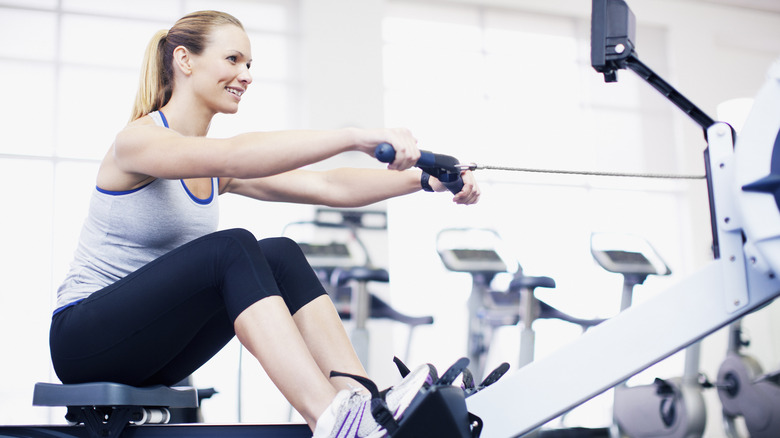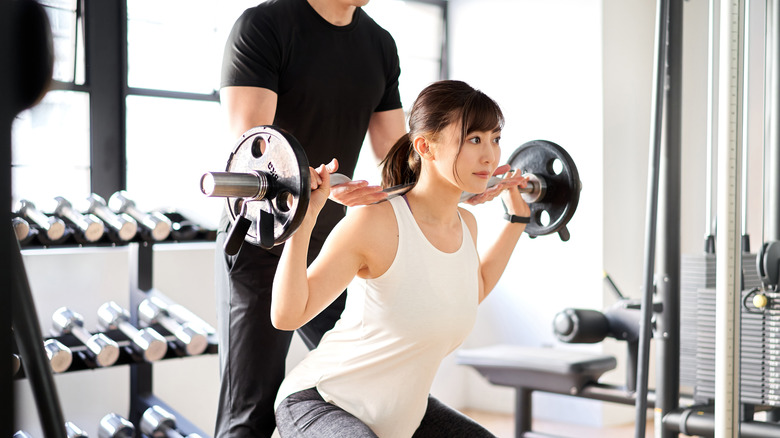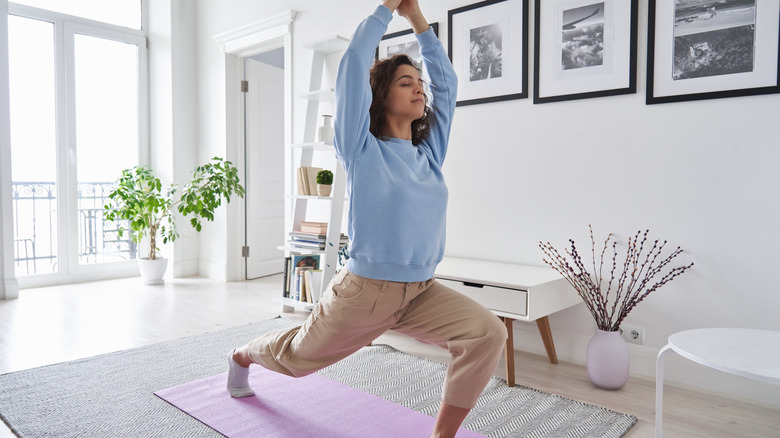Gym Workouts Vs. Home Workouts: How To Choose What's Best For You
At this point, you probably don't need any more additional reminders about the benefits of moving your body. Fitness is integral to your overall well-being, and not just because it gives you killer abs and Michelle Obama arms.
The CDC notes that regular exercise is important, as not only can it help with weight loss and make your bones and muscles stronger, but it also does wonders for your mental health. Hamming out in the gym on a regular basis apparently also decreases your chances of developing certain diseases.
However, as we all know, exercising can be a chore. Whether you do it at a premiere health club or within the four walls of your bedroom, consistently engaging in rigorous physical activity is a tough habit to build. But as it turns out, where you do your exercising plays a big part in helping you make an exercise routine that works. It all boils down to your unique needs and, of course, budget.
Deciding between gym vs home workouts
At the start of every new year, gyms and fitness centers everywhere offer promos for memberships, so you know that not all are heavy on the wallet. But aside from some being low-cost, the biggest advantage of heading to the gym is its wide range of equipment that could help with your workouts — think treadmills, rowing machines, stationary bicycles, and a wide collection of dumbbells. You're afforded all of these in a gym, and each one caters to specific parts of the body. In fancier gyms, you can also enjoy group workouts and other nifty amenities, like showers and saunas. You can even choose to hire a personal trainer if your budget allows. And aside from the cost, perhaps the main drawback of working out at the gym is the commute getting there and the fact that you have no choice but to share equipment with strangers.
On the other hand, working out in the comfort of your own home is undoubtedly more convenient. You don't have to dress up, commute, or adhere to a certain time frame for your sweat sessions. You can switch up your workouts whenever you want, and you have a wealth of options to choose from like fitness apps, videos, and on-demand virtual classes. The downside? You don't have any specialized equipment, although you may always build a mini-home gym if you wish. If you're short on space, you may also find it difficult to do certain moves, so you have to find exercises that the room can accommodate.
How to have an effective home workout
With home workouts being the most cost-effective of the two options, it's the best choice if convenience is your priority. Now, all it takes is for you to build a routine and stick to it. But before you go ahead and buy home-friendly exercise equipment, you first have to experiment with all sorts of workouts to find what works best for you. "Remember, you need to get into the habit of exercising first," personal trainer Lyndsey Todd tells Women's Health Magazine. "This will also help ensure you don't use the excuse of 'waiting for Amazon so I can work out.'" You don't want to waste money on equipment that would only end up gathering dust.
It's also equally important to dedicate a space for your workouts. Even if it's just your living room or a tiny corner in your bedroom, having a designated area trains your mind and body that you have a go-to area solely for fitness purposes. And besides, with a dedicated space, you won't have to spend time moving things around before exercising. That'll only require more energy — energy you could have spent stretching or getting a few squats in.
You may also find it convenient to have at least a few key pieces of equipment to assist with your exercises. At the very least, you should have a yoga mat and some resistance bands for more efficient training. You don't have to worry too much about weights. Milk jugs, canned goods, and water bottles would work just fine.


